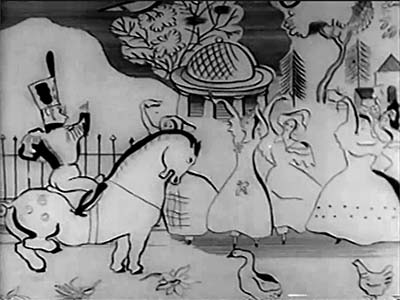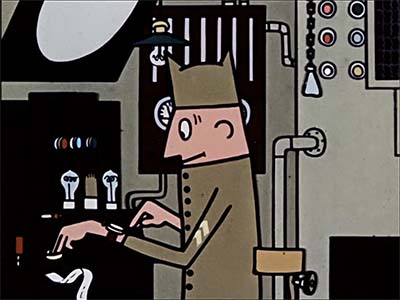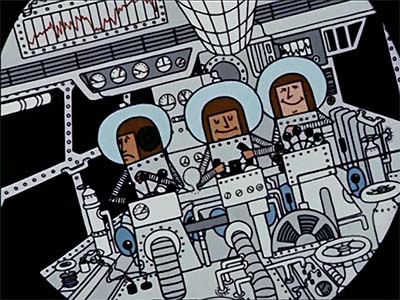People who aren’t members of Animation Resources don’t understand how comprehensive our Reference Packs are. Over the next couple of weeks, we will be posting what each section of our current RefPack looks like. If you are a member of Animation Resources, click on this post to go to the Members Only page. If you aren’t a member yet, today is the perfect time to join! Our current Reference Pack is one of our best yet, and General and Student Members get access to a special Bonus Archive with even more material from past Reference Packs.
What are you waiting for?![]()
JOIN TODAY!
https://animationresources.org/membership/levels/

The world of animation is much bigger than it might appear to us at first glance. We are all familiar with the films we grew up with, but Hollywood wasn’t the only place that produced great cartoons… Poland, Japan, Russia, China and Europe all have their own traditions and a rich history of animated film making. Animation Resources’ archive contains many foreign films that are rarely seen in the United States. We feature a sampling of interesting animation from around the world in each Reference Pack.
JOIN TODAY To Access Members Only Content
The Legend Of The Forest (1st Mvt.)
![]()
Osamu Tezuka / Japan / 1987
Download this article
Osamu Tezuka is one of the best known figures in Japanese manga and anime. He was born into a wealthy family and received a good education. As a boy, his mother took him to the theater and his father introduced him to Disney films, both of which would be lifelong influences. In elementary school, he drew comics and aspired to become a cartoonist. When he had the opportunity to see the Wan Brothers’ film, Princess Iron Fan as a child, it further inspired him to become an animator.
As a teenager in 1944, he was drafted into the war effort to work in a factory, but he continued to draw comics. The next year he entered Osaka University with the intent of pursuing a medical career, while drawing on the side. A comic series he created was published in a children’s newspaper, and that led to a collaboration with manga artist Shichima Sakai on a story based on Robert Lewis Stevenson’s Treasure Island. While still in medical school, he published a science fiction manga trilogy: Lost World (1948), Metropolis (1949) and Nextworld (1951). He followed that up with Kimba The White Lion (1950) and Ambassador Atom (1951), which spawned the character known in Japan as Mighty Atom. (In the United States, we know him as Astro Boy.) His success as a cartoonist ended up convincing him to shelve his medical career.
Tezuka’s first work in animation was storyboarding Saiyuki, Toei’s adaptation of the monkey king saga, Journey To The West. He was chronically late on his deadlines, and ended up delivering a rambling 500 page board that Toei deemed to be unusable. The film was completely rewritten and released as Alakazam The Great (1960). His experience at Toei frustrated Tezuka, but he made many good contacts with professional animators. He took advantage of these contacts when he joined Mushi Productions, a rival studio, hiring away many of Toei’s animators to join him on new projects.
Throughout his life, Tezuka greatly admired Disney’s Fantasia, and aspired to make a film that synthesized classical music and animation in the same manner. He chose Tchaikovsky’s Fourth Symphony Op. 36 as a soundtrack and set to work on animating his impressions of the music. Tezuka’s concept for "Legend Of The Forest" was to use the forest as a metaphor for the development of animation as a technique. The animation would mirror the step by step advancement of animation techniques from primitive animatics based on comics, like the early years of animation; and as the film progressed, the style would develop as animation developed, all the way to full animation. In the fourth movement, TV animation would invade the Disney style and drive it out, the way TV animation techniques replaced the labor intensive full animation of the 1940s and 50s.
Tezuka only completed the first and fourth movement before his death. We are sharing the first movement in this Reference Pack, and we will share the fourth one in the next.
Tezuka made this personal film while he was producing television animation and publishing manga. Its purpose was to allow him to explore new ideas and techniques with complete freedom. The innovations he came up with in his experiments ended up enriching his commercial work. No matter how busy you are with studio work, you should always carve out time to experiment like Tezuka. What innovations might your own experiments produce?
MP4 Video File / HD / 29:31 / 1.33 GB Download
JOIN TODAY To Access Members Only Content
The Music Box
![]()
Nikolai Khodataev / Russia / 1933
Back in Reference Pack 039, we featured an early Russian cartoon titled "Interplanetary Revolution". Made in 1924 by Nikolai Khodataev and Zenon Komissarenko, "Interplanetary Revolution" is a blend of hand drawn animation and paper cutout pixilation that at times resembles the work of Terry Gilliam. Today, we are sharing another film by Khodataev, "The Music Box" (1933).
Following the October Revolution, artists and writers were inspired to sweep away all traces of the bourgeois Czarist past. Fine artists turned to modernist abstraction, writers explored objective, functional aspects of life and politics, and designers shunned decorative art for daring new kinds of architecture and graphics. Animation was just beginning in Russia, and it embraced the revolutionary changes being made as well. The principle technique was the "slash system", inked drawings on paper that were cut out and manipulated under the camera. Khodataev later wrote of this time, "There were times when we had nothing to be proud of except our inexhaustible energy and our brave stuggle to conquer the technology of this young art, so unfamiliar to us."
The state sponsored studio Mezhrabpomfilm, employed most of the animators at that time, but Khodataev was an exception. As an independent animator, he could come up with his own stories without the interference of government censors. "The Music Box" was more primitive technically than the state sponsored films, but creatively it was much more daring. The designs were by Daniel Cherkes and were highly stylized with a sinuous inked line, not unlike the drawings in contemporary caricature journals and avant-garde posters. The film was quite different than anything being made at that time, but ultimately that difference led to its downfall.
A year after "The Music Box" was released, Stalin declared that Socialist Realism was the only artistic movement that would be allowed, and the work of Khodataev was suppressed. While other artists sublimated themselves to Stalin’s decree, Khodataev chose to abandon his work in animation, feeling that it was better to have no art at all than to be limited to Socialist Realism. Other animators, principally Ivan Ivanov-Vano, carried the torch at the government controlled studios, and Soyuzmultfilm was founded in 1936.
Our copy of this film is subtitled, so I will only provide a basic synopsis… In the pre-revolutionary world of Czarist Russia, the bourgeois class is put in charge, ruling over blindly submissive idiots. Whole towns of dummies suffer from the whims and decadence of the ruling class… specifically wars, taxes, flogging and aristocratic decadence.
MP4 Video File / SD / 20:21 / 340 MB Download
JOIN TODAY To Access Members Only Content
Sensation Of The Century
![]()
Otto Sacher / DEFA / East Germany / 1959
Otto Sacher was born in 1928 and studied at the Institute for Artistic Design in Halle, East Germany. In 1955, he founded the Animation department of the DEFA Studios, the state-owned film studio of the German Democratic Republic. DEFA was created in 1946 by the Soviets in the hopes that film was the best means to counter over a decade of Nazi propaganda. The style of DEFA was known as “Socialist Realism”, an ideologically focused kind of film that was tightly controlled by Soviet censors.
Strangely enough, DEFA was known for producing Westerns, but ones where the Indians were the “good guys” and the cowboys were the “bad guys”. The intent was to make the United States appear to be evil. In the mid 1950s, the studio began producing satirical films, and animation was the perfect medium for this. "Sensation Of The Century" is one of the earliest examples.
Otto Sacher taught animation at the Dresden College Of Fine Arts in the 1960s while he continued to make films himself. This was the only University level animation program in East Germany at the time. He made over 60 films during his nearly four decade career, and in 1991 he established the German Institute for Animated Film (DIAF) in Dresden.
This film is subtitled, so I won’t provide a synopsis. It’s a very clever and efficiently produced satire on the Soviet-American space race. I apologize for the digital artifacting in this film. Films like this are difficult to find in perfect transfers.
MP4 Video File / SD / 13:54 / 298 MB Download
![]()
More members mean we can bring you more special downloads.
JOIN TODAY To Access Members Only Content
Animation Resources is one of the best kept secrets in the world of cartooning. Every month, we sponsor a program of interest to artists, and every other month, we share a book and up to an hour of rare animation with our members. If you are a creative person interested in the fields of animation, cartooning or illustration, you should be a member of Animation Resources!
It’s easy to join Animation Resources. Just click on this link and you can sign up right now online…
JOIN TODAY!
https://animationresources.org/membership/levels/
![]()
![]() Animation Resources depends on your contributions to support its projects. Even if you can’t afford to join our group right now, please click the button below to donate whatever you can afford using PayPal.
Animation Resources depends on your contributions to support its projects. Even if you can’t afford to join our group right now, please click the button below to donate whatever you can afford using PayPal.






































